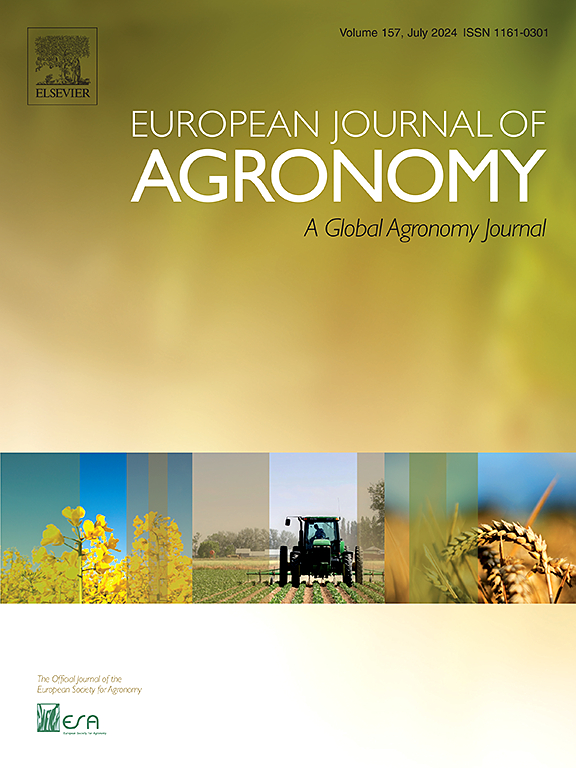Straw-mulching rather than plastic-mulching strengthens ammonia-oxidizing archaea in driving nitrification in a nitrogen-fertilized calcareous soil
IF 4.5
1区 农林科学
Q1 AGRONOMY
引用次数: 0
Abstract
Ammonia-oxidizing archaea (AOA) and ammonia-oxidizing bacteria (AOB) are essential in driving soil ammonia oxidation, thus regulating NO3− leaching losses in terrestrial ecosystems. However, the potential nitrification activity (PNA), AOA, and AOB, and their intrarelationships and potential drivers in concurrent mulching and N fertilization remain elusive. To address these issues, we collected soil samples from a field experiment treated with mulching (CT, no mulch; RF, plastic-mulched ridges and straw-mulched furrows; SM, straw mulch) and N fertilization (0, 120, and 240 kg N ha−1) for 16-years. The results showed that PNA was ranked as SM > RF ≈ CT and significantly increased with increasing N. Mulching had a stronger influence than N rate on the abundance, Shannon index, and beta diversity of AOA and AOB, but the N rate had more significant impacts on the phylogeny of AOA and AOB. Microbial nutrient limitation, soil organic carbon, and available potassium (AK) were vital determinants regulating the abundance, Shannon index, and beta diversity of AOA, while these parameters were mediated by pH, total N, and NO3− for AOB. PNA was linearly dependent on AOA and AOB abundance, and significantly correlated with Nitrososphaera cluster 4 (AOA) and Nitrosospira clusters 2, 3b, and 11 (AOB). Partial least squares path modeling further illustrated that mulching significantly affected PNA through mediating AOA in CT–SM rather than CT–RF, although the AOB-induced contribution to PNA exceeded that of AOA, suggesting an essential role of straw-mulching retention in enhancing the AOA contribution to ammonia oxidization. The N rate had greater impacts than mulching on PNA, and pH and AK were the two most important edaphic variables influencing PNA through mediating AOA and AOB. Collectively, these results provide evidence that AOB dominates nitrification in concurrent mulching and N-fertilized calcareous soils and highlight the capacity of straw mulching to strengthen the contribution of AOA to PNA.
秸秆覆盖比塑料覆盖更能增强氨氧化古细菌在氮肥化石灰性土壤中的硝化作用
本文章由计算机程序翻译,如有差异,请以英文原文为准。
求助全文
约1分钟内获得全文
求助全文
来源期刊

European Journal of Agronomy
农林科学-农艺学
CiteScore
8.30
自引率
7.70%
发文量
187
审稿时长
4.5 months
期刊介绍:
The European Journal of Agronomy, the official journal of the European Society for Agronomy, publishes original research papers reporting experimental and theoretical contributions to field-based agronomy and crop science. The journal will consider research at the field level for agricultural, horticultural and tree crops, that uses comprehensive and explanatory approaches. The EJA covers the following topics:
crop physiology
crop production and management including irrigation, fertilization and soil management
agroclimatology and modelling
plant-soil relationships
crop quality and post-harvest physiology
farming and cropping systems
agroecosystems and the environment
crop-weed interactions and management
organic farming
horticultural crops
papers from the European Society for Agronomy bi-annual meetings
In determining the suitability of submitted articles for publication, particular scrutiny is placed on the degree of novelty and significance of the research and the extent to which it adds to existing knowledge in agronomy.
 求助内容:
求助内容: 应助结果提醒方式:
应助结果提醒方式:


